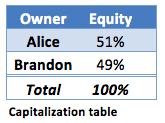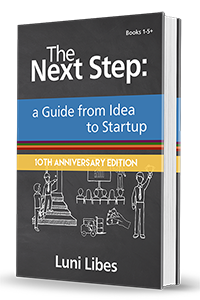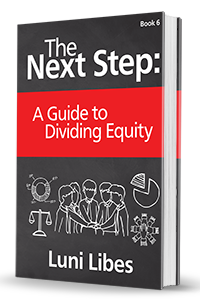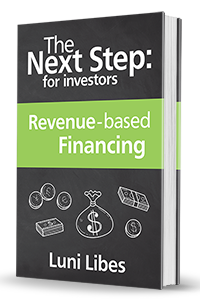Alice and Brandon, equal co-founders
Alice and Brandon have worked together for years. Over lunch one day, they discuss a problem they’ve seen their customers struggle with. They decide to quit their jobs and pursue a business to solve that problem.
Alice’s expertise is in marketing, both in designing products and creating marketing campaigns. At the job she left, she ran a team of twelve people doing just that.
Brandon’s expertise is in sales. He was the top salesman at that prior company.
Alice and Brandon agree that Alice will take the CEO role and Brandon will take the lead of Business Development and Sales. Each person will cover their own expenses for the first six months, while the company gets going, and each contributes a few thousand dollars to pay for the initial startup costs.
 In their discussion of equity ownership, Alice expects a 55%/45% split due to her CEO role. Brandon prefers a 50%/50% split. They compromise on 51%/49%, leaving Alice with the majority, as they agree that, as the company grows, the number of people Alice will be responsible for will be larger than Brandon.
In their discussion of equity ownership, Alice expects a 55%/45% split due to her CEO role. Brandon prefers a 50%/50% split. They compromise on 51%/49%, leaving Alice with the majority, as they agree that, as the company grows, the number of people Alice will be responsible for will be larger than Brandon.
They set up the equity as restricted shares, vesting (i.e., becoming unrestricted) over forty-eight months.










